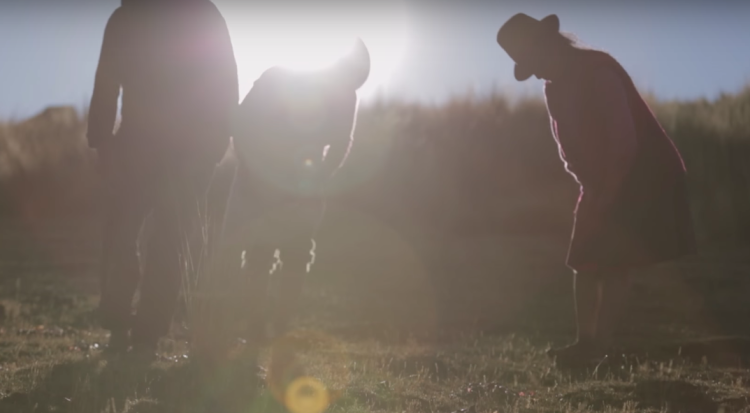![[object Object]](https://cdn.berthafoundation.org/wp-content/uploads/2018/11/shorthand/3168/J9WDy2OxB9/assets/d3eLyXR2Zw/Screen%20Shot%202018-04-26%20at%2019.11.07-1047x563.png)
VIDEO ADVOCACY CASE STUDY
QUIPU PROJECT IN PERU
Using Technology and Film to Mobilize Communities Affected by Forced Sterilizations

Summary
Organizations Involved:
Chaka Studio created the Quipu Project, including its interactive documentary and impact campaign
The video documentary Quipu: Calls for Justice was co-produced by Lucida Media (Perú), Mucha Media (Chile) and Sandelion Productions (Colombia) and commissioned by Bertha Foundation and The Guardian
Countries of Production:
Peru and United Kingdom
Issue Addressed:
Forced sterilization of women in Peru
Intended Use of Multimedia Project:
Mobilization tool to document the women's stories, unite affected women across Peru and reach international audiences who can pressure for justice in Peru
Target audiences:
Indigenous women across Peru, international community and urban political and business leaders in Peru
Media:
Interactive documentary - The Quipu Project (audio online platform, +100 hours):
Video documentary - Quipu: Calls for Justice (21.48 min video)
The Issue
In 1995, under the guise of driving down poverty, Peru’s then President Alberto Fujimori launched a reproductive health plan with a strong focus on ‘voluntary’ permanent contraception methods. In practice, these surgical procedures were performed routinely on women without their informed consent and almost exclusively in poor rural indigenous communities. Often left with little to no aftercare, many of these women still suffer health complications and emotional trauma from these forced sterilizations.
It is estimated that roughly 272,000 women and 21,000 men were sterilized in Peru from 1996 until 2000, when Fujimori resigned from office. One of these cases was that of Mamerita Mestanza, who underwent a forced sterilization in 1996 and died at home nine days after the procedure. After years lingering in the Peruvian justice system, her case reached the Inter-American Commission of Human Rights (IACHR), a regional body where unresolved and emblematic human rights cases from the Americas are heard.
In 2002, in the midst of a truth and reconciliation process that was investigating human rights violations from the 1980s and 1990s, the state of Peru finally recognized its international legal responsibility in the forced sterilization of Mestanza and thousands of other women. This enabled several legal proceedings at the national level, but these were repeatedly shelved for alleged lack of evidence. At the time of publication in November 2018, Peru has yet to adequately hear and offer redress to the women affected by forced sterilization and many believe that international attention is the only way to bring those responsible to justice.
The Organization
Chaka Studio produces documentary films and transmedia projects through an interdisciplinary approach to new media technology. Exploring how web multimedia and interactive storytelling online can be used offline, Chaka developed the Quipu Project to give women the opportunity to be heard and receive support as they continue their struggle for justice. The name is inspired by “Quipus”, which are knotted cords that were used by the indigenous Incas to convey complex messages. The Quipu Project’s staff are from Chile, Peru, Canada, Colombia and the United Kingdom.
Why Media?
Inspired by similar projects such as WeFarm - a peer-to-peer service where farmers can contribute to and access crowd-sourced information without the internet - the Quipu Project established an exclusive phone line for women to record their testimonies in 2013, which then became available on a public website. Contrary to traditional documentaries, this interactive online audio platform is a two-way communication channel where women can also listen and respond to each other via a phone line, creating a support infrastructure that can connect people across communities.
The Quipu Project also set out to produce a feature video documentary to bring all the components of the project together, telling the story of the interactive documentary and providing political context so that a broader audience could better understand the issue. However, the phone line component took longer than anticipated so the video was postponed to 2016, when the Quipu Project partnered with Bertha Foundation and The Guardian Documentaries to produce a 20 minute video documentary.
Together, the interactive documentary and a video documentary form the Quipu Project’s outreach tools.
Advocacy Objectives and Target Audiences
The objective of the Quipu Project is three-fold: first, connect and mobilize communities across Peru and link them to the international community for support; second, amplify a collective voice and demonstrate strength in numbers; third, allow those most affected to be the authors of their own story, forming a collective memory preserved for Peruvian history.
The primary target audiences are the affected communities and local organizations who use the Quipu Project. The secondary target audience is the international community, which many believe is the only way to pressure the Peruvian state to act on this issue. The third audience is those urban elites in Peru who are not supportive of these communities’ struggles and often do not see the sterilizations as a discriminatory policy.
The Interactive Documentary and Video
Interactive Documentary - The Quipu Project
The Quipu Project established an Ethics Advisory Board in 2014 to address issues of informed consent and safety and security. As the initiative evolved, the Quipu Project adjusted its policies on privacy and confidentiality. For example, when the pilot project was launched in 2013, the women often shared their names and locations. By 2015, the Quipu Project edited the names out of previous testimonies and participants were advised to record testimonies without names as a safety measure, given that contributors could face retaliation or be denied medical services in their community. There were also concerns for health professionals who could be targeted.
The Quipu Project has made several deliberate production choices that reflect the purpose of the project:
To ensure technology was not a barrier to participation, the Quipu Project distributed simple mobile phones throughout villages and used radio advertisements to publicize the project, explaining that contributors can leave testimonies in their native Quechua rather than Spanish and that their testimonies would remain unaltered
The Spanish and Quechua is subtitled in English, and not dubbed. Some advisors suggested voice-overs to avoid subtitles on audio on the website, but the Quipu team was committed to leave the original stories and voices, without the mediation of a researcher or translator
As backdrop to the audio, the Quipu Project used moving images that reflected the women’s context (scenes of a village, for example) so that no individual face is identifiable. This was a deliberate choice in line with the project’s goal to build Peru’s collective memory of that era and show how this state policy created a widespread emblematic pattern of abuses, not isolated cases of medical misconduct
Testimonies are continuously added to the website, so the interactive documentary is a ‘living’ project that continues to grow and evolve after its ‘release’ online. This open-ended structure reflected the non-linear nature of the production phases and how the issue of forced sterilization continues to be unresolved until justice is achieved
Video Documentary - Quipu: Calls for Justice
Video lends itself to character driven narrative, so the Quipu Project’s initial idea of a video documentary on the overall interactive documentary project followed two key contributors, Esperanza Huayama Aguirre and Teódula Pusma Carrión, who shared their story across Peru and mobilized other women to join the Quipu Project. To script and edit the video documentary, the Quipu Project worked with Bertha Foundation and The Guardian Documentaries over eight months with a budget of roughly $22,000. This number does not reflect the full cost of the production, given that the Quipu Project already had most of the footage. The Quipu Project took the lead on editing.
Impact Distribution Strategy
Interactive Documentary - The Quipu Project
In 2013, the Quipu Project piloted the interactive documentary phone line in the village of Huancabamba in the Peruvian Andes and then expanded to the towns of Ayacucho and Cusco. There the team connected with the Asociación de Mujeres Afectadas por Esterilizaciones Forzadas/AMAEF (Association of Women Affected by Forced Sterilizations), a 15-year-old organization that raises awareness of the issue and represents over 1,300 women who were forcibly sterilized. In early 2017, the project was taken to the Peruvian Amazon. The Quipu Project also worked with community radio in Spanish and Quechua to promote the phone line, which led to a 923% increase in calls and a 2217% increase in time spent on the phone line. Even after the radio campaign was no longer on air, the phone line continued to see a monthly increase in terms of both numbers of callers and listening time, which suggests an ongoing impact from the promotion.
Human rights organizations in Peru have also been tapping into the Quipu Project’s archive in their legal and advocacy work to secure redress for the women affected, namely the Estudio para la Defensa de los Derechos de la Mujer (Office for the Defence of Women’s Rights) and the Instituto de Defensa Legal (Institute for Legal Defense), as well as in Amnesty International’s Against Their Will campaign.
Video Documentary - Quipu: Calls for Justice
The video documentary produced with Bertha Foundation and The Guardian Documentaries was launched in February 2017, to coincide with Peru’s presidential elections. One of the candidates was Keiko Fujimori, former President Fujimori’s daughter who became First Lady at the age of 18 after her parents’ divorce and the issue of forced sterilization quickly became politicized during election season.
Screenings of the video documentary in Peru’s provinces were better attended than in the capital of Lima, where many do not believe that the state policy on sterilization was discriminatory and unjustified. As a result, the Quipu Project focused on regional distribution efforts and global work, leading to mentions in several outlets such as: The Guardian, The New York Times, The Independent, Scroll India, Wired, BBC World Service, TV Perú Noticias, La República, The Conversation, Latin Correspondent, New Internationalist, El País, New Statesman and more. This visibility brought more visitors to the website and allowed the Quipu Project to hear of other organizations working on forced sterilizations in India and the Czech Republic, for example.
Impact and Outcomes
The Quipu Project set out to build a collective repository of testimonies and has proven to be an important historical reference point for the broader public. For example, when Peru’s history of forced sterilizations came to the forefront of national debate, the interactive documentary platform received more than triple the number of their average users per month.
The release of the video documentary produced with Bertha Foundation and The Guardian Documentaries also brought additional traffic to the interactive documentary: in November 2016, one year after the platform launch, there were 10,600 users. Following the video launch in February 2017, it reached an audience of 21,000 users from more than 127 countries. In Peru, after a screening of the video documentary in Ucayali in the Amazon region, several women expressed interest in organizing: “like women of the mountainous region of Huancabamba, Cusco and Ayacucho.” To facilitate an exchange of experiences, the Quipu Project conducted a workshop bringing the women of Cusco, Ayacucho, Piura and Acayali together in December 2017.
The video and the interactive documentary also provided a platform for solidarity and mobilization for communities that are politically, geographically and digitally marginalised. For many women, this was the first time that their stories were acknowledged outside their own communities or families. Many women reported that listening to other women’s stories showed them how their experiences were part of a broader pattern, which encouraged them to share their story and join forces to seek justice. Moreover, in 2016, women’s organizations from Huancabamba and Cusco came together as a single national organization, AMPAEF - the first time that Peruvian women who faced forced sterilization presented themselves as one unified front.
While these women leaders were already creating change in their respective communities, the partnership with the Quipu Project brought them new skills and visibility with non-governmental organizations, the media and other key actors. This has widened their sphere of influence and strengthened their ability to seek redress at the local, national and international levels. For example, the collaboration with the Quipu Project contributed to Esperanza Huayama Aguirre becoming the president of her local women’s organization and a renowned human rights activist in Peru. As one of the most recognized voices today in the campaign for those affected by the forced sterilizations, she participated in a public meeting with the then Peruvian President Pedro Pablo Kuczynski and has traveled internationally to advocate for justice. She has also appeared in national and international media including the BBC, Reuters, El País, Vice and others.
SOURCES
THE NEW STATESMAN: The Artistic Campaign to Help 300,000 Peruvian Women Sterilised Against their Will
THE GUARDIAN: Quipu: Uncovering Shocking Tales of Peru's Sterilisation Programme
QUIPU BLOG
IMAGE CREDITS
Quipu Project





-750x422.jpg)





